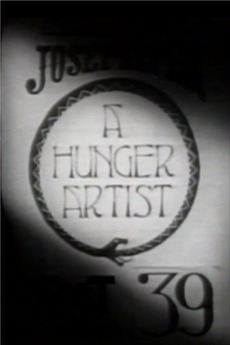 This 1982 Franz Kafka adaptation is a nicely lensed 22-minute account that really captures the story’s surreal élan. “A Hunger Artist,” originally published in 1922, is widely considered one of Kafka’s finest works, and contains a very representative mixture of fantastic and realistic elements. The bizarre account of a man who fasts for the edification of sycophantic crowds who then desert him in favor of more mundane attractions, it’s almost the very definition of “Kafkaesque.”
This 1982 Franz Kafka adaptation is a nicely lensed 22-minute account that really captures the story’s surreal élan. “A Hunger Artist,” originally published in 1922, is widely considered one of Kafka’s finest works, and contains a very representative mixture of fantastic and realistic elements. The bizarre account of a man who fasts for the edification of sycophantic crowds who then desert him in favor of more mundane attractions, it’s almost the very definition of “Kafkaesque.”
This film was the second by John Strysik, who was coming off the H.P. Lovecraft inspired short THE MUSIC OF ERICH ZANN. I prefer that film, but it was THE HUNGER ARTIST that made the greater overall impression, garnering Strysik entry into Hollywood and a writing/directing gig on TALES FROM THE DARKSIDE. More recently Strysik has worked as a screenwriter on the Stuart Gordon productions DEATHBED and STUCK.
The Hunger Artist is a spindly man who fasts for days on end. A narrator informs us that in recent years interest in the “art” of fasting has waned, but back in the day the sight of a man starving was an extremely popular attraction.
We see stagehands keep watch on the Hunger Artist day and night so he won’t eat, in preparation for his appearance in a cage before an enthusiastic audience. His fast always ends after 40 days and nights, since the Hunger Artist’s manager is convinced audiences will lose interest if the act lasts any longer. Yet the Artist is nothing if not ambitious, and, in defiance of his manager’s wishes, extends his fast to an unheard-of 109 days. By this point, however, people have grown indifferent to fasting, preferring to focus their attention on caged animals.
Eventually the Hunger Artist is relegated to just another captive beast. He ends up buried in a bale of hay at the bottom of his cage. A circus manager orders the cage (and its occupant) cleaned out, but before this occurs the Hunger Artist reveals the secret of his fasting: “I never found a food I liked.”
John Strysik hasn’t directed much in recent years, but in A HUNGER ARTIST he demonstrated a fair amount of filmmaking skill. Shot in expressionistic black and white, it’s a stately film, deliberately paced and edited. The early 20th Century period details are quite convincing, and the filmmaking (excepting a somewhat distracting slow pan in the opening scenes) impressive. Strysik also utilizes silent movie intertitles, which help in establishing a primitive and archaic time frame.
Franz Kafka’s largely symbolic story doesn’t seem like something that might be successfully adapted to film, but Strysik pulls it off, capturing much of the texture and imagery of Kafka’s original. The film is ultimately on the level of an above-average TWILIGHT ZONE episode (whereas Strysik’s MUSIC OF ERICH ZANN I feel transcends that), complete with a surprise at the end.
Vital Statistics
A HUNGER ARTIST
Fast Day Productions
Director/Producer/Screenplay/Editor: John Strysik
(Based on a story by Franz Kafka)
Cinematography: Michael Goi
Cast: Robert Rothman, Jim Wotting, Jon Hoffman, Katherine O’Connell
